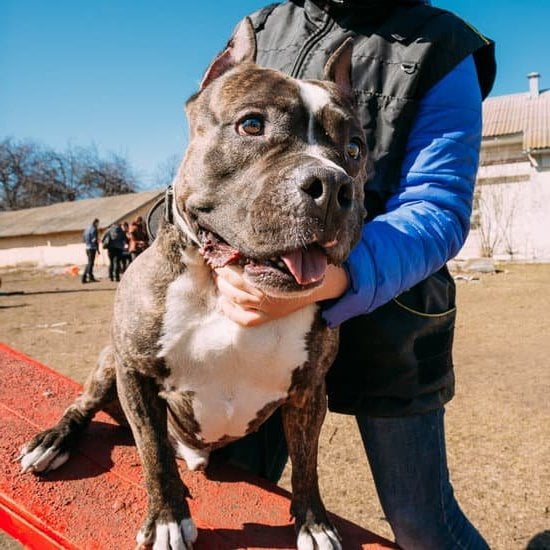Training dogs using food as a reward is a popular and effective method that many pet owners swear by. In this article, we will explore the concept of food training dogs – a technique that utilizes tasty treats to reinforce desired behaviors in our furry companions. From understanding the benefits of food training to choosing the right treats and establishing a consistent routine, we will delve into how to effectively train your dog using food.
Food training has gained popularity due to its effectiveness in promoting positive behavior in dogs. By using high-value treats as rewards, pet owners can motivate their dogs to learn new commands and behaviors quickly. Not only does food training serve as a powerful incentive for dogs, but it also helps strengthen the bond between the owner and their canine companion. With proper implementation, this training method can lead to remarkable results in shaping your dog’s behavior.
When it comes to selecting the right food for training purposes, it is essential to choose high-quality treats that are both appealing and nutritious for your dog. High-value treats such as small pieces of cooked meat or commercial dog treats can be highly motivating for most dogs during training sessions. Establishing a consistent routine with these treats will help reinforce positive behaviors consistently and set the foundation for successful food training sessions with your furry friend.
Benefits of Food Training for Dogs
Food training has become widely popular among dog owners as an effective method for teaching and reinforcing desired behaviors in their furry companions. The concept of food training dogs revolves around using food rewards to positively reinforce good behavior, making it a powerful tool in shaping your pet’s actions. By understanding the benefits of food training, you can better appreciate why it works so well in transforming your dog into a well-behaved and obedient companion.
Engagement and Motivation
One of the key benefits of food training for dogs is its ability to engage and motivate them during training sessions. High-value treats serve as a powerful motivator for dogs, encouraging them to focus and actively participate in the learning process.
This engagement not only makes training more enjoyable for your pet but also increases their willingness to learn new commands and behaviors. Through consistent use of food rewards, you can keep your dog’s attention on the task at hand and enhance their overall learning experience.
Bonding and Relationship Building
Another significant advantage of food training is its role in fostering a strong bond between you and your dog. By incorporating reward-based techniques into your training routine, you create positive associations with yourself as the source of tasty treats.
This helps build trust and respect between you and your pet, strengthening your relationship over time. The act of rewarding good behavior with food also promotes mutual understanding and communication, leading to improved cooperation and harmony between you and your furry friend.
Effective Behavior Modification
Food training is highly effective in modifying undesirable behaviors in dogs by emphasizing positive reinforcement methods. Instead of punishing unwanted actions, such as jumping or barking excessively, food training focuses on rewarding alternative behaviors that are desirable.
By consistently rewarding good behavior with treats, you can effectively shape your dog’s habits and responses in a more positive way. This approach not only helps eliminate problem behaviors but also teaches your pet new skills and tricks through a gentle and rewarding process.
Choosing the Right Food for Training
When it comes to training your dog using food rewards, one of the most crucial aspects is choosing the right type of treats. High-value treats are essential in food training as they serve as a powerful motivator for your furry friend. These treats should be irresistible to your dog and something that they are willing to work for during training sessions. Here are some key considerations when selecting the perfect treats for food training:
- Texture: Choose treats that are easy to chew and swallow quickly, allowing for seamless training sessions without interruptions.
- Aroma: Opt for treats with a strong smell that will captivate your dog’s attention and keep them engaged throughout the training process.
- Taste: Select treats that your dog absolutely loves and finds delicious; this will reinforce positive behaviors effectively.
In addition to considering the characteristics of the treats, it’s also important to ensure that you’re using appropriately sized portions during training sessions. Treats should be small enough to be consumed quickly but big enough to make an impact as a reward. By offering high-value treats, you are not only motivating your dog but also strengthening the bond between you two through positive reinforcement strategies.
Furthermore, make sure to vary the types of high-value treats you use during training sessions. This helps prevent your dog from becoming bored or losing interest in the rewards. Rotating different flavors or textures can keep your pet enthusiastic and eager to participate in each training session. Remember, finding the right balance between tasty treats and moderation is key in successfully food training dogs.
Setting Up a Food Training Routine
One of the key aspects of successfully food training dogs is establishing a consistent routine. Dogs thrive on structure and predictability, so having a set schedule for their training sessions can help them understand what is expected of them. Consistency not only helps in reinforcing good behavior but also makes it easier for dogs to learn and retain new commands.
When setting up a food training routine, it’s important to consider the timing and frequency of training sessions. Short, frequent sessions are generally more effective than long, sporadic ones. Aim for multiple short sessions throughout the day rather than one extended session. This approach keeps your dog engaged and prevents them from getting bored or overwhelmed.
In addition to regular training sessions, consistency in the type and amount of treats used is equally important. High-value treats are often recommended for food training as they provide extra motivation for dogs to follow commands.
It’s essential to use treats that your dog finds especially enticing, such as small pieces of cooked chicken or cheese. By maintaining consistency in both the routine and the rewards, you can effectively teach your dog how to food train dogs while keeping them engaged and eager to learn.
| Aspect | Importance |
|---|---|
| Timing and Frequency | Multiple short sessions are more effective than long, sporadic ones. |
| Type and Amount of Treats | High-value treats provide extra motivation for dogs to follow commands. |
Techniques for Successful Food Training
Food training is a popular and effective method for teaching dogs new behaviors and tricks. One of the key components of successful food training is using positive reinforcement methods. By rewarding your dog with treats when they exhibit the desired behavior, you are reinforcing that behavior and encouraging them to repeat it in the future. Here are some techniques for successful food training using positive reinforcement:
- Use high-value treats: Choose treats that your dog absolutely loves and finds irresistible. This will motivate them to work harder during training sessions.
- Timing is key: Make sure to give your dog the treat immediately after they perform the desired behavior. This helps them make the connection between their actions and the reward.
- Keep it consistent: Be consistent in your training sessions by using the same command word or hand signal every time. This will help your dog understand what is expected of them.
Positive reinforcement methods not only make training more enjoyable for your dog, but also help strengthen your bond with them. When your dog associates good behavior with rewards, they are more likely to listen to commands and behave well in various situations.
Using positive reinforcement techniques during food training can also help boost your dog’s confidence and self-esteem. By receiving praise and treats for their efforts, dogs feel encouraged and motivated to continue learning and improving their skills. Remember to keep training sessions fun and engaging for your furry friend to ensure success in every lesson.
Common Mistakes to Avoid
When it comes to food training dogs, there are certain common mistakes that dog owners should be aware of in order to ensure successful training sessions. One of the most frequent errors is using low-value treats during training.
It is crucial to choose high-value treats that your dog finds irresistible in order to motivate and reward them effectively. Using bland or unappealing treats can result in lackluster training sessions and may lead to frustration for both you and your dog.
Another mistake to avoid is inconsistency in the timing and amount of treats given during food training. It is important to establish a routine and stick to it, providing rewards promptly after desired behaviors are exhibited. Inconsistency can confuse your dog and make it difficult for them to understand what is being asked of them. By being consistent with your training, you can help reinforce positive behaviors and set clear expectations for your furry friend.
Additionally, one common pitfall in food training is using treats as a bribe rather than a reward. Treats should be used as a tool for positive reinforcement, not as a way to coax or manipulate your dog into performing certain actions. By using treats strategically as a reward for good behavior, you can create a positive association with the desired actions and help strengthen the bond between you and your canine companion.
Troubleshooting Food Training Challenges
Identifying Behavioral Challenges
Food training dogs can sometimes present challenges, especially if your furry friend is not responding as expected. One common difficulty in food training is when the dog loses interest in the treats or becomes easily distracted during training sessions. This may be due to various factors such as fatigue, lack of motivation, or even stress. It’s essential to identify the root cause of these behavioral challenges before addressing them effectively.
Introducing Variety in Treats
To overcome difficulties in food training, it’s important to keep your dog engaged and motivated. One way to do this is by introducing a variety of high-value treats that appeal to your dog’s taste preferences.
Experiment with different types of treats such as freeze-dried liver, cooked chicken pieces, or even vegetables like carrots or sweet potatoes. By offering a mix of treats during training sessions, you can keep your dog excited and focused on learning new commands.
Adjusting Training Techniques
If you’re facing challenges in food training your dog, it may be helpful to reassess your training techniques. Sometimes, dogs may become confused or overwhelmed by complex commands or inconsistent rewards. Simplify the commands and break them down into smaller steps for easier understanding. Additionally, make sure to provide immediate and consistent rewards for desired behaviors to reinforce positive learning. By adjusting your approach and being patient with your furry companion, you can overcome obstacles in food training effectively.
Advanced Food Training Tips
When it comes to food training dogs, there are advanced tips that can help take your dog’s training to the next level. One key tip is to gradually increase the level of difficulty in the training tasks. Start by asking for simple commands like sit or stay, then progress to more complex behaviors like fetching objects or performing tricks. By challenging your dog’s mental and physical abilities, you can keep their interest high and continue their learning process.
Another essential tip for advanced food training is to vary the rewards you use during training sessions. While high-value treats are great for teaching new behaviors, it’s important to mix it up with praise, toys, or playtime as rewards. This variety prevents your dog from getting bored with the same treats and keeps them motivated to work hard during training. Additionally, using a combination of rewards can reinforce different behaviors effectively.
Consistency is key in any dog training method, including food training. However, in advanced food training, consistency becomes even more crucial. Make sure to set clear expectations for your dog and stick to a regular training schedule. Consistent commands and rewards will help your dog understand what is expected of them and reinforce good behavior effectively. Remember that patience and persistence are essential when taking your dog’s training to the next level through food training methods.
| Key Tip | Overview |
|---|---|
| Vary Rewards | Using a mix of treats, praise, toys during advanced food trainings. |
| Consistency | Setting clear expectations and sticking to a regular schedule for effective results |
| Mental & Physical Challenge | Progressively increasing difficulty levels in tasks for continued growth. |
Conclusion
Food training dogs can be an incredibly rewarding and effective method of training your furry companion. By understanding the concept of food training, you can harness the power of positive reinforcement to shape your dog’s behavior in a gentle and encouraging way. Using high-value treats is crucial in maintaining your dog’s motivation and focus during training sessions, making it essential to choose the right kind of food for training.
Establishing a consistent food training routine is key to seeing progress in your dog’s behavior. By implementing positive reinforcement methods, such as clicker training or using verbal cues, you can effectively communicate with your dog and reinforce desired behaviors. However, it is important to be mindful of common mistakes, such as using low-quality treats or inconsistent rewards, that can hinder the effectiveness of food training.
When faced with challenges during food training, it is important to troubleshoot and adapt your methods accordingly. Whether dealing with distractions or difficulties in shaping specific behaviors, patience and persistence are key in overcoming obstacles. By following advanced food training tips and continuously working on refining your techniques, you can take your dog’s training to the next level and enjoy a strong bond built on trust and mutual understanding.
Frequently Asked Questions
How Do You Train a Food Driven Dog?
Training a food-driven dog involves using their favorite treats as rewards for good behavior. Start by finding out what type of food motivates them the most and use it consistently during training sessions to reinforce positive actions.
How Do I Teach My Dog to Eat Dog Food?
Teaching a dog to eat dog food can be a gradual process. Begin by mixing small amounts of the new dog food with their current food, gradually increasing the proportion over time. Making meal times fun and interactive can also help encourage them to try the new food.
What Food Can I Use to Train My Dog?
When it comes to training your dog, using high-value treats such as cooked chicken, cheese, or freeze-dried liver can be very effective. These types of foods are usually more enticing for dogs and they are willing to work harder in order to receive them as rewards during training sessions.

Welcome to the blog! I am a professional dog trainer and have been working with dogs for many years. In this blog, I will be discussing various topics related to dog training, including tips, tricks, and advice. I hope you find this information helpful and informative. Thanks for reading!





